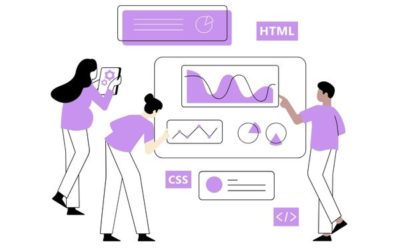Typography Combinations: Harmonizing Fonts for Visual Impact.
Mastering the Art of Typeface Pairing: Unlocking Endless Design Possibilities.
This article will study typography combinations and explore the art of harmonizing fonts to create stunning visual designs that leave a lasting impression. By Pairing Serif and Sans-Serif fonts, we are unlocking endless design possibilities. The role of typography is essential to create and enhance visual appeal and readability. Typography has a defining position in the brand’s image and plays a crucial role in setting the mood and tone of a design. Additionally, typography plays a pivotal role in user experience and engagement. Typography elements can shape the emotional response, create a desired atmosphere, and effectively communicate the intended message. The choice of font can significantly impact how your audience perceives your brand. It’s not just about aesthetics but also the psychology behind font selection. The realm of typography encompasses various aspects and elements. For instance, consider the details involved in creating text, such as typefaces, letterforms, kerning, leading, tracking, alignment layouts, fonts, font styles, and font variations. Plus, visual order (hierarchy) and other principles determine how the text looks on a page. Choosing complementary typefaces can enhance the visual appeal and readability. Knowing how to pair fonts is an art that can help create a harmonious design. For this project, we took a more straightforward approach. Yet still wanted to get creative with typography choices by combining two different fonts in what is commonly called “type pairing. We primarily focus on pairing serifs and sans-serif typography combinations to create a harmonious ambiance and balance.What is a Serif and Sans-Serif typefaces?
A serif typeface is easily recognizable due to the small strokes extending from each character, commonly called ‘feet.’ The decorative stroke known as Serif adds additional embellishments and details, giving the letters a more traditional and classic appearance. Interestingly, Serif typefaces have been around since the 15th century. Most notably, Johannes Gutenberg printed the famous Gutenberg Bible with movable type. The Gutenberg Bible used a serif font called Blackletter or Textura. Publishing world in the fifteen century, Europe widely used Blackletter and Textura serif fonts. It’s no wonder that Serif fonts are often perceived as more sophisticated and refined. The sophistication and refinement characteristics make serif fonts ideal for printing. The Sans-Serif typeface does not have serifs, or small decorative lines, aka feet. In French, sans mean without hence comes the name sans-serif. The absence of Serif or decorative strokes gives this typeface style a cleaner, more modern appearance. Sans-serif conveys a sense of minimalism, informality, and contemporary style that makes it feel more approachable. For this reason, this typeface style is the preferred choice for screen and digital environments. In conclusion, the classic serif font has decorative strokes, adding a sense of sophistication and heritage. The streamlined sans-serif style provides a much more modern feel. Combining the two is often the perfect way to achieve a professional yet inviting design. For this project, we used a vast collection of free web fonts offered by Google Fonts. Google Fonts Page We used a combination of serif and sans-serif fonts. The serif font is reserved for headings or (specific design elements) to create visual contrast and hierarchy. We reserved the san-serif fonts for the body text. It is important to note that here we only considered complimentary text sizes and ignored other aspects of typography, such as letterforms, kerning, leading, tracking, alignment layouts, fonts, font styles, and font variations. Each element could add style and characteristics to the design, so the outcome will be different.1) Merriweather Serif & Montserrat Sans
Montserrat Sans is a contemporary sans-serif font with simple, geometric lines, making it an ideal choice for digital and print design. On the contrary, Merriweather Serif is known for its legibility and readability, making it excellent for extended reading materials like books and articles.
2) Lora Serif & Open Sans
Open Sans is widely used with a clean and friendly appearance, making it suitable for various digital and print design projects. In contrast, Lora Serif is an elegant serif typeface with a timeless and sophisticated charm, often chosen for enhancing readability.
3) Playfair Display Serif & Robato Sans
Playfair Display Serif is a distinctive and stylish serif typeface that gives elegance and sophistication, often used to add a touch of classic refinement to headings, titles, and high-impact design elements. On the other hand, Roboto Sans is a popular sans-serif typeface known for its modern and clean design, making it a reliable choice.
4) Libre Baskerville Serif and Source Sans Pro
Here we have the typeface Libre Baskerville Serif an elegant and timeless typeface with graceful curves and high legibility, making it a perfect choice for conveying a sense of sophistication and classic charm in print and digital designs. For the long text, we have Source Sans Pro, a versatile and modern sans-serif font known for its clean lines, a wide range of weights, and excellent readability, making it ideal for conveying a contemporary and professional look in various design applications.
5) Crimson Text Serif & PT Sans
Crimson Text Serif is an elegant and graceful typeface that portrays elegance and sophistication. It is a captivating choice for conveying a classic and timeless aesthetic in print and digital designs. On the other hand, PT Sans is a versatile and legible sans-serif font that offers a modern and clean design, making it well-suited for a wide range of applications, from body text to headings, where clarity and readability are essential.
6) Abril Fatface Serif and Nunito Sans
This is one of the best pairings since this combination creates striking contrast creating a strong sense of elegance. The pairing of Abril Fatface Serif and Nunito Sans makes a notable difference between bold elegance and modern simplicity. Abril Fatface Serif’s large and curvaceous letterforms command attention and add a touch of sophistication, while Nunito Sans’s clean lines and geometric shapes provide a sleek and contemporary counterbalance. This combination strikes a harmonious balance, making it suitable for creating visually appealing headings and body text that effectively communicate style and clarity in various design contexts.
7) PT Serif & Raleway Sans
PT Serif and Raleway Sans form a harmonious typographic duo, combining classic elegance with modern simplicity. In this combination, the contrast is simple yet combines classic elegance and modern simplicity for better reading. PT Serif’s refined serifs and legible letterforms add a touch of sophistication to headings and body text, while Raleway Sans’ clean and geometric design provides a contemporary and minimalistic aesthetic. This combination achieves a balanced visual hierarchy and readability, making it preferable for various design applications.
8) Oswald Serif and Lato Sans
Combining Oswald Serif and Lato Sans produces an impressive contrast between thick, powerful letters and smooth, geometric shapes. Oswald Serif has a bold style that catches the eye, while Lato Sans offers a refreshingly modern appearance with its legible design. Together they find a harmonious equilibrium, making them perfect for creating impactful titles and body text that communicate a contemporary flair and hierarchy in many different layouts.
In conclusion, for this project, we explored various techniques, principles, and considerations for achieving harmonious typography combinations, considering factors such as contrast, hierarchy, mood, and overall design objectives. Choosing serif or sans-serif fonts for websites depends on the target audience’s context, branding, and readability considerations. As mentioned above, we ignored other aspects of typography, such as letterforms, kerning, leading, tracking, alignment layouts, fonts, font styles, and font variations. Each element could add style and characteristics to the design so that the outcome will be different.
Featured Services
Headless WordPress New
HubSpot IntegrationNew
Divi WordPress Support/ Legacy ProjectsNew
Let's get started on your project.
We use cutting-edge web design techniques and tools to develop sites that draw in and keep the interest of your desired customers.
Articles
The Benefits of a Responsive Web Design for Your Business
In April 2015, Google announced that its...
How to Improve Website Performance and Page Load Time
Many search engines favorite fast-loading...
What is Headless WordPress
Headless WordPress is an architecture where the backend (WordPress) is separated from the frontend (the presentation layer), allowing for greater flexibility, mostly for developers and content writers.



